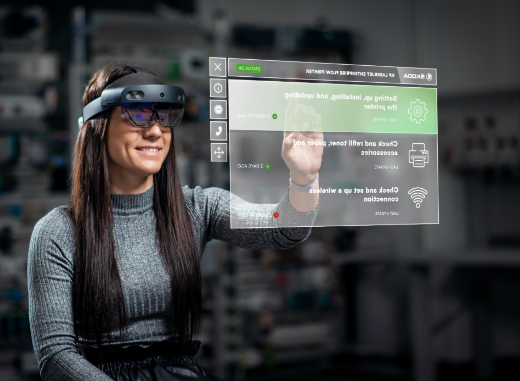In the world of design, staying ahead of the curve is essential for career longevity. While some trends may seem like mere gimmicks, there’s a rising star that demands attention: augmented reality (AR).
In this blog post, I will explain the potential of AR, its current status, and why designers should start gearing up for this transformative wave.
The Current AR Landscape: Beyond Minecraft Earth
Minecraft Earth is an excellent example of an AR game, but AR is still largely seen as a playground for creative concepts rather than serious applications. However, this perception is bound to change, and it’s crucial for designers to be ready.
Looking Ahead: The Next 5 to 10 Years in AR Design
Fast forward five to ten years, and AR is poised to become a powerhouse in the design industry. As major players like Apple and Facebook invest in next-gen mixed reality headsets, the demand for designers skilled in creating AR interfaces will skyrocket. This shift opens up new avenues for designers willing to step into the world of augmented reality.
The Essence of Presence: A New Dimension for Designers
One key aspect that designers need to grasp is the concept of presence. Imagine conducting a workshop or giving a presentation without physically being present – AR makes this a reality. Companies will seek designers who can craft interfaces that enhance this sense of presence, creating immersive experiences for users.
AR in 2024: Beyond HoloLens and Magic Leap
As of 2020, products like Microsoft HoloLens 2 and Magic Leap are on the market, mainly catering to enterprise needs. However, the real breakthrough is expected when tech giants like Apple and Facebook make their foray into AR. This move will likely bring AR into the mainstream and open up a myriad of applications beyond enterprise use.
Designing for the Future: What it Means for You
For designers, especially those entrenched in traditional UX design for smartphones, now is the opportune moment to broaden their skill set. Learning to design for AR involves exploring new tools and platforms, such as ARKit by Google. Even experimenting with AR on your smartphone can provide valuable insights and a solid starting point.
Challenges and Opportunities: The AR Design Dilemma
Undoubtedly, going into AR design comes with its challenges. Learning Unity, exploring 3D modeling programs, and adapting to new design paradigms may seem daunting. However, these challenges present unique opportunities to future-proof your career and become a sought-after expert in a rapidly evolving field.
FAQ
What is augmented reality (AR), and how is it different from virtual reality (VR)?
Augmented reality (AR) enhances the real-world environment by overlaying digital information, whereas virtual reality (VR) immerses users in a completely virtual environment. AR adds digital elements to the real world, creating a blended experience, while VR creates a fully immersive, simulated environment.
Why should designers consider learning AR design in 2024?
With major tech players like Apple and Facebook investing in AR, the demand for designers skilled in creating AR interfaces is expected to soar. Learning AR design now positions designers at the forefront of a transformative wave, offering new career opportunities and staying ahead of industry trends.
Are there any beginner-friendly tools for experimenting with AR design?
Absolutely! Google’s ARCore and Apple’s ARKit provide accessible platforms for designers to experiment with AR on their smartphones. These kits offer a user-friendly introduction to AR design, allowing designers to explore and test their ideas without requiring expensive hardware.


